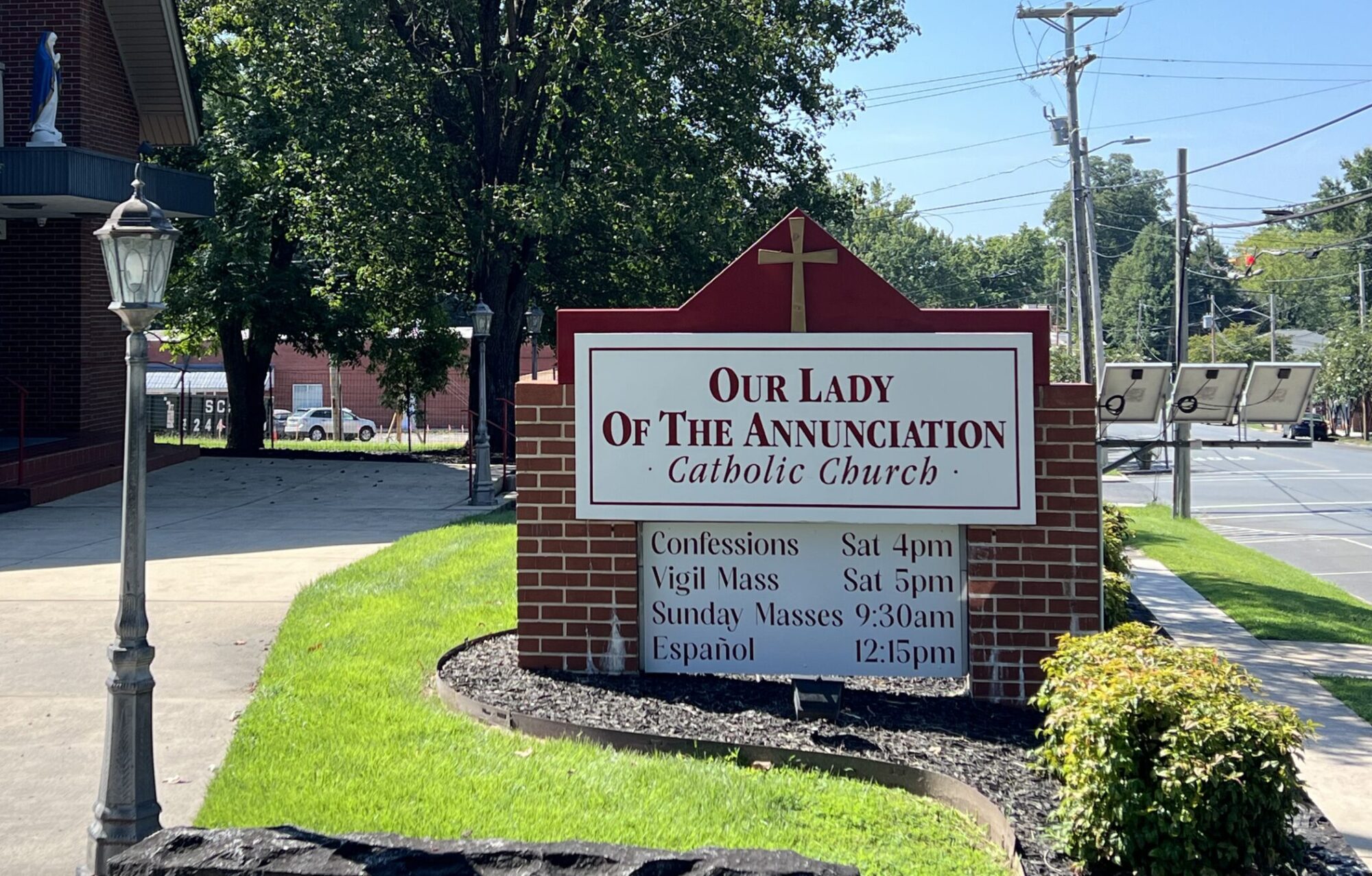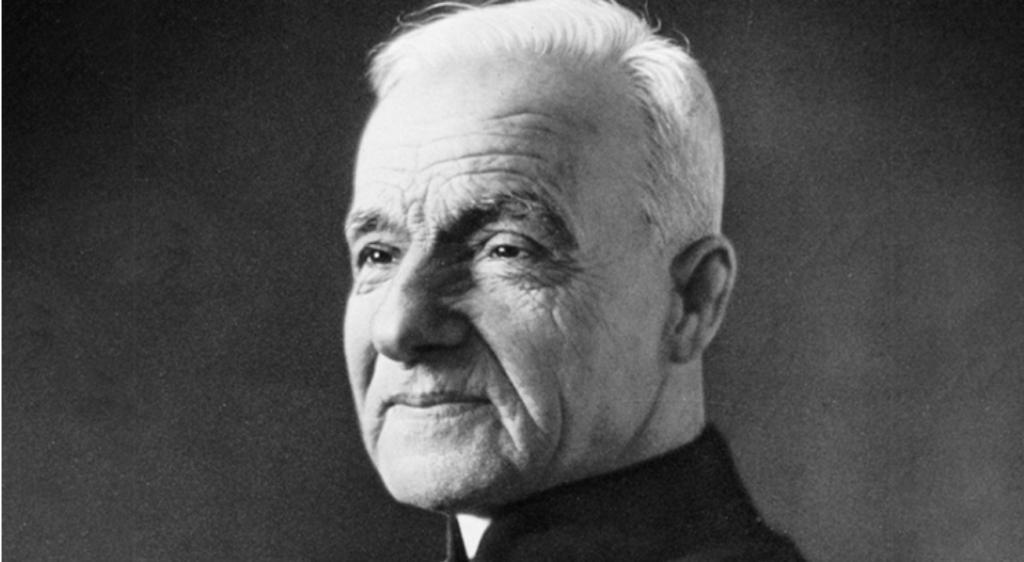
Daily Reflection – Truth


416 N 2nd St, Albemarle NC 28001 | (704) 982-2910



Perhaps because the United States got a later start in the history of the world, it has relatively few canonized saints, but their number is increasing.
John Neumann was born in what is now the Czech Republic. After studying in Prague, he came to New York at 25 and was ordained a priest. He did missionary work in New York until he was 29, when he joined the Redemptorists and became its first member to profess vows in the United States. He continued missionary work in Maryland, Virginia and Ohio, where he became popular with the Germans.
At 41, as bishop of Philadelphia, he organized the parochial school system into a diocesan one, increasing the number of pupils almost twentyfold within a short time.
Gifted with outstanding organizing ability, he drew into the city many teaching communities of sisters and the Christian Brothers. During his brief assignment as vice provincial for the Redemptorists, he placed them in the forefront of the parochial movement.
Well-known for his holiness and learning, spiritual writing and preaching, on October 13, 1963, John Neumann became the first American bishop to be beatified. Canonized in 1977, he is buried in St. Peter the Apostle Church in Philadelphia.
Reflection
Neumann took seriously our Lord’s words, “Go and teach all nations.” From Christ he received his instructions and the power to carry them out. For Christ does not give a mission without supplying the means to accomplish it. The Father’s gift in Christ to John Neumann was his exceptional organizing ability, which he used to spread the Good News. Today the Church is in dire need of men and women to continue in our times the teaching of the Good News. The obstacles and inconveniences are real and costly. Yet when Christians approach Christ, he supplies the necessary talents to answer today’s needs. The Spirit of Christ continues his work through the instrumentality of generous Christians.
Saint John Neumann is a Patron Saint of:
Educators/Teachers
//Franciscan Media//

Saint André Bessette’s Story
Brother André expressed a saint’s faith by a lifelong devotion to Saint Joseph.
Sickness and weakness dogged André from birth. He was the eighth of 12 children born to a French Canadian couple near Montreal. Adopted at 12, when both parents had died, he became a farmhand. Various trades followed: shoemaker, baker, blacksmith—all failures. He was a factory worker in the United States during the boom times of the Civil War.
At 25, André applied for entrance into the Congregation of Holy Cross. After a year’s novitiate, he was not admitted because of his weak health. But with an extension and the urging of Bishop Bourget, he was finally received. He was given the humble job of doorkeeper at Notre Dame College in Montreal, with additional duties as sacristan, laundry worker and messenger. “When I joined this community, the superiors showed me the door, and I remained 40 years,” he said.
In his little room near the door, he spent much of the night on his knees. On his windowsill, facing Mount Royal, was a small statue of Saint Joseph, to whom he had been devoted since childhood. When asked about it he said, “Some day, Saint Joseph is going to be honored in a very special way on Mount Royal!”
When he heard someone was ill, he visited to bring cheer and to pray with the sick person. He would rub the sick person lightly with oil taken from a lamp burning in the college chapel. Word of healing powers began to spread.
When an epidemic broke out at a nearby college, André volunteered to nurse. Not one person died. The trickle of sick people to his door became a flood. His superiors were uneasy; diocesan authorities were suspicious; doctors called him a quack. “I do not cure,” he said again and again. “Saint Joseph cures.” In the end he needed four secretaries to handle the 80,000 letters he received each year.
For many years the Holy Cross authorities had tried to buy land on Mount Royal. Brother André and others climbed the steep hill and planted medals of Saint Joseph. Suddenly, the owners yielded. André collected $200 to build a small chapel and began receiving visitors there—smiling through long hours of listening, applying Saint Joseph’s oil. Some were cured, some not. The pile of crutches, canes and braces grew.
The chapel also grew. By 1931, there were gleaming walls, but money ran out. “Put a statue of Saint Joseph in the middle. If he wants a roof over his head, he’ll get it.” The magnificent Oratory on Mount Royal took 50 years to build. The sickly boy who could not hold a job died at 92.
He is buried at the Oratory. He was beatified in 1982 and canonized in 2010. At his canonization in October 2010, Pope Benedict XVI said that Saint Andre “lived the beatitude of the pure of heart.”
Reflection
Rubbing ailing limbs with oil or a medal? Planting a medal to buy land? Isn’t this superstition? Aren’t we long past that superstitious people rely only on the “magic” of a word or action. Brother André’s oil and medals were authentic sacramentals of a simple, total faith in the Father who lets his saints help him bless his children.
//Franciscan Media//

St. Apollinaris Claudius (2nd c.), also called St. Apollinaris of Hierapolis, was a bishop in what is today Turkey. He became famous for his polemical writings against the heretics of his day, showing that their theological errors were taken from the pagans. His most famous work was an Apologia for the Christians addressed to Roman Emperor Marcus Aurelius in the year 177 A.D. In it he reminded the Emperor of a miracle he received because of the Christians: when his army was nearly defeated in an attempt to conquer the Germanic barbarians, it was the prayers of the Christians among his soldiers which obtained the needed relief and the military victory, even though Christianity was illegal. In light of this miracle, Apollinaris requested the Emperor’s protection of Christians from persecution. St. Apollinaris’ work earned him the moniker, “Apollinaris the Apologist.” His writings are largely lost, and what we know of his work comes to us from other early Christian writers including St. Jerome and Eusebius. His feast day is January 8th.
//Catholic Company//

St. William of Bourges (1155–1209), also known as St. William the Confessor, was born to a noble family in France. He was educated under his uncle who was an archdeacon, and from a young age turned away from the world and gave himself over to religion and learning. He became a priest and later entered religious life in a Cistercian monastery, an order famous for strict discipline. St. William was known to be a cheerful man and a hard worker, and pure of heart. He was chosen to be Archbishop of Bourges in the year 1200, much to his dismay. He left the solitude of the monastery out of obedience and entered into the public life of a bishop, throwing himself wholeheartedly into serving both the spiritual and physical needs of the poor. As bishop he continued his great austerities. He had a great devotion to the Blessed Sacrament and would spend much time in prayer at the foot of the altar. He was known for performing miracles both during his life and after his death. He died kneeling at prayer, and by request was buried wearing his hair shirt and lying in ashes. His feast day is January 10.
//Catholic Company//

Pope St. Hyginus (d. 142 A.D.) was born in Athens, Greece, and became the ninth successor to the Chair of St. Peter. He reigned as pope for four years from about 138-142 A.D. Many of the details of his life have not been preserved, although various actions are credited to him: defending the Catholic faith against the Gnostic heresy which spread in Rome; beginning the practice of including godparents at infant baptisms to help the newborn child receive a Christian upbringing; and decreeing that all churches must be consecrated. Pope St. Hyginus is buried near the tomb of St. Peter on Vatican Hill. It is uncertain whether he became a martyr under the persecutions of Roman Emperor Marcus Aurelius. His feast day is January 11.
//Catholic Company//

St. Marguerite Bourgeoys (1620-1700) was born in France to a large middle-class Christian family. After having a deep religious experience at the age of 20, Marguerite dedicated her life to God through the Virgin Mary. She then joined an aposolate which served God by educating underprivileged children. When she was 32 the governor of Fort Ville-Marie (now Montreal, Canada), visited Marguerite’s town and invited her to be a missionary in the New World as a lay teacher, instructing the children of the colonists and the Native Americans. Marguerite agreed and made the long ocean journey. Realizing the importance of the family in establishing New France, Marguerite mentored young ladies and prepared them for marriage and family life as pioneer women. She signed as a witness on the marriage certificates of many early settlers. As a result of these activities she was affectionately called the “Mother of the Colony.” She also worked to build the first church and the first school. She also founded the Congregation of Notre Dame of Montreal, which is an active religious order to this day. For her great apostolic and missionary activity she is considered the co-foundress of Montreal. She is also the first woman saint of the Catholic Church in Canada. Her feast day is January 12.
//Franciscan Meda//


We need to see silence, and nothingness itself, as a kind of being in the great chain of being, maybe the first link from which all others emerge. St. Bonaventure, the Italian spiritual genius who picked up the intellectual thread from the non-academic Francis, led us through the great chain of being from material things, to inner soul, to the Divine. John Duns Scotus, an early Franciscan, said you may speak of being with one voice from the being of the earth itself, to the waters upon the earth to the minerals within the earth, the flowers and trees and grasses, the animals, the humans, the angelic choirs, the divine. Both of these mystics would have said that once you stop seeing the divine in any one link of that chain, the whole thing will fall apart. It is either all God’s work or you have a hard time finding God in mere parts. That split and confused world is the postmodern world we live in today, which no longer knows how to surround and ground all things in silence. This is not an oversimplification. Either you see God in all things, or very quickly you cannot see God anywhere, even in your own species.
—from the book Silent Compassion: Finding God in Contemplation by Richard Rohr
//Franciscan Media//